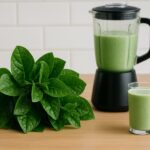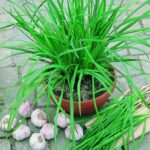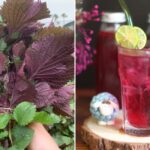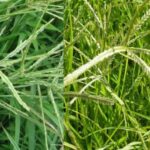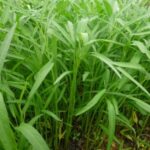In a world where food safety is a growing concern, finding fresh and pesticide-free vegetables to protect your family’s health is a priority. While not everyone has the luxury of growing their own organic produce, there are some resilient and low-maintenance vegetable options that require minimal use of chemicals and are easily accessible to most. Discover five rustic and nutritious vegetable varieties that are widely favored by Vietnamese families.
1. Water Spinach (Rau Muống) – Vietnam’s Favorite Green
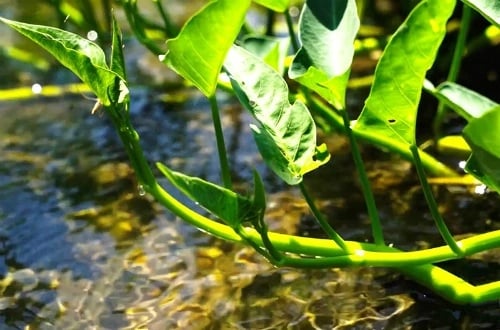
Simply plant a few stems in moist soil or clean water, and within 5-7 days, you’ll see roots and sprouts. What’s unique about water spinach is its rapid growth; harvest it a few times, and it will keep growing back, providing a month’s worth of produce from a single planting. With its resistance to pests and diseases, water spinach is a safe, clean, and cost-effective choice for families.
2. Sweet Potato Leaves and Vines (Rau Lang) – A Two-in-One Crop
Sweet potato leaves and vines offer a dual benefit—you can consume the young leaves as vegetables, and the plant will also yield sweet potatoes. This vine-growing plant thrives in containers, balconies, or small gardens, and it doesn’t require chemical fertilizers. Sweet potato leaves can be stir-fried with garlic, boiled, or added to soups and rolls, providing a nutritious boost of iron and aiding digestion. This vegetable is a gardener’s and foodie’s delight, offering convenience and health benefits.
3. Vietnamese Mint (Rau Ngót) – Abundant and Nutritious
Vietnamese mint is a shrub-like plant with a long lifespan; the more you trim it, the stronger it grows. It can survive for several years, rarely needs pesticides, and thrives in Vietnam’s hot and humid climate. Rich in vitamins A, C, calcium, and fiber, Vietnamese mint is a nutritious addition to your diet. A soup made with Vietnamese mint, shrimp, or minced meat is a refreshing choice during the hot summer months. With just a small yard, you can grow enough Vietnamese mint to last all year, eliminating the need to buy it from the market.
4. Basella Alba (Mồng Tơi) – Thrives with Moisture, No Pesticides Needed

Growing Basella alba is straightforward: sow the seeds in the ground, water them daily, and watch them climb and spread across your trellis, ready for harvest in no time. Basella alba is commonly used in crab or clam soups or boiled for a refreshing, detoxifying, and digestive-aiding meal. City dwellers can easily grow this vegetable in containers, ensuring a constant supply of fresh, green produce.
5. Perilla (Tía Tô) – A Hardy and Versatile Herb
These five vegetables are easy to grow, naturally resilient, and require minimal use of pesticides, making them an ideal choice for urban families or busy individuals. With just a bit of soil, water, and sunlight, you can have your own safe, fresh, and delicious produce right at home, free from harmful chemicals and pesticides.
The Ultimate Superfood: A $1 Bargain for Healthy Hair and Glowing Skin
You don’t need to spend a fortune on expensive cosmetics to achieve healthy hair and skin. For just a fraction of the cost, you can nourish your hair and skin with a simple ingredient – water spinach! For only 10,000 VND, you can purchase water spinach and create your own natural hair and skin care treatment at home.
Who Should Refrain from Drinking Perilla Leaf Tea?
Introducing the powerful health benefits of perilla leaf water – a nutritional powerhouse, but not for everyone.
Perilla leaf water is an ancient remedy, a traditional drink with a plethora of health advantages. Rich in essential nutrients, it offers a boost to overall wellness. However, despite its myriad benefits, this drink is not universally suitable. Some individuals should refrain from consuming it.
5 Common Vegetables to Eat Year-Round: Affordable and Nutritious Options for a Healthy Diet
Vietnam is a country with a thriving agricultural sector, boasting an abundance of diverse fruits and vegetables. Among this plethora of produce, there are five particular types of vegetables that stand out, not only for their affordability but also for their proven health benefits, as supported by experts and scientific research.

























